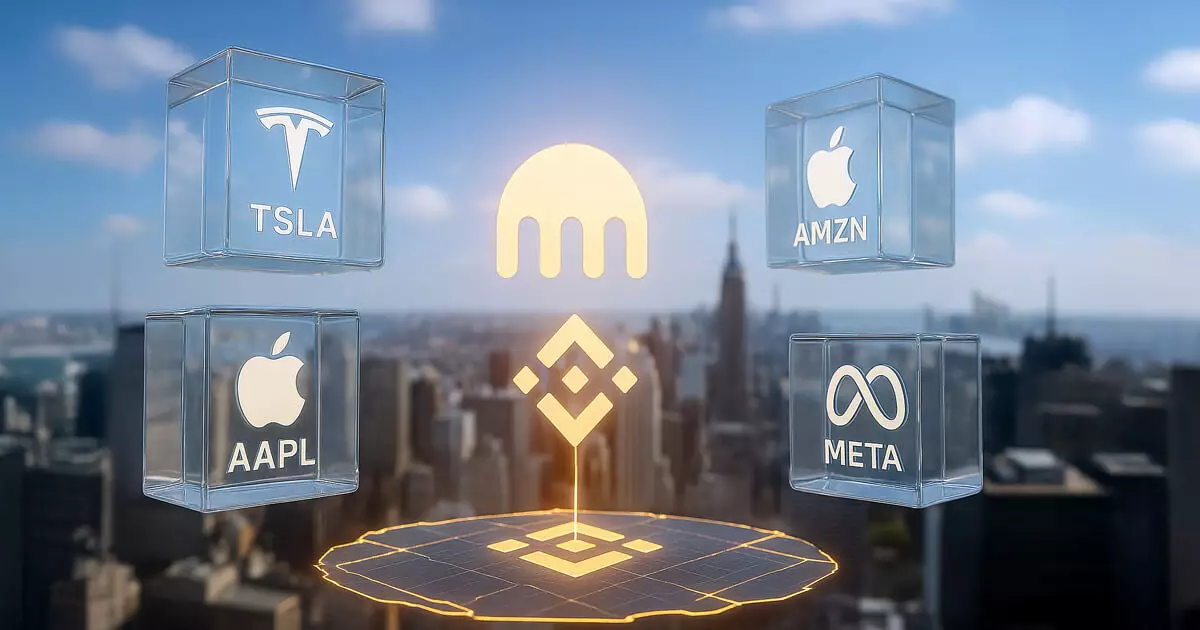The recent expansion of Kraken’s xStocks to BNB Chain symbolizes a seismic shift in how we perceive and access financial assets. By integrating tokenized U.S. equities, Kraken is challenging the very foundations of traditional investment paradigms. This move is more than just technological innovation; it’s a strategic thrust toward democratizing financial participation on a global scale. Unlike conventional stocks, these tokenized assets—such as AAPLx or TSLAx—are designed to be nimble, programmable, and compatible with DeFi protocols, breaking down geographical and infrastructural barriers that have long hindered investors outside the U.S. Essentially, it’s a bold step that signals a future where ownership of equities is no longer constrained by borders or operational hours.
This shift toward multi-chain, decentralized interoperability fosters a more fluid, integrated financial environment. Kraken’s emphasis on “chain-neutral” assets reflects a vision for seamless, instant transfers and settlement that bypass archaic, legacy systems. It’s an assertion that traditional custodial rails and regulatory frameworks are increasingly obsolete in the face of blockchain’s capacity for atomic, 24/7 settlement. The move hints at an inevitable need for legacy institutions to adapt—or face irrelevance—if they cling to the old, centralized modus operandi.
The Broader Industry Context: From Trend to Transformation
Kraken is not alone in recognizing the lucrative potential of tokenized assets. Major industry players like Robinhood and heavyweight financial firms including BlackRock are investing heavily in tokenization strategies. The appeal is obvious: investors worldwide desire the transparency, instantaneousness, and efficiency blockchain technology promises. The market’s projection of tokenized assets ballooning to $30 trillion by 2030 underscores this momentum. It’s a clear indication that the future of finance cannot afford to ignore the disruptive force of digital tokens representing real-world assets.
However, this transformation harbors profound implications for traditional markets. Conventional exchanges such as NYSE have anchored their dominance on centralized, round-the-clock trading and structured hours, creating a predictable and stable environment. Blockchain-based assets and decentralized trading platforms threaten to erode this stability by introducing continuous market access, which can lead to heightened volatility during off-hours. Such a paradigm shift threatens to diminish the unique value propositions of legacy exchanges, forcing them into a corner where adaptation is no longer optional but essential.
The transition isn’t merely about new technology; it’s about reshaping the economic landscape. As more brokerages and institutions embrace blockchain settlement, the revenue streams that once sustained traditional exchanges—trading fees, data sales—are under attack. The rise of real-time, decentralized asset ownership could redefine the power dynamics in global finance, favoring agile, blockchain-savvy players while legacy incumbents struggle to remain relevant. The acceleration of tokenization could fundamentally transform the very architecture of financial markets, which, in its current form, may soon be rendered archaic by the relentless march of innovation.














